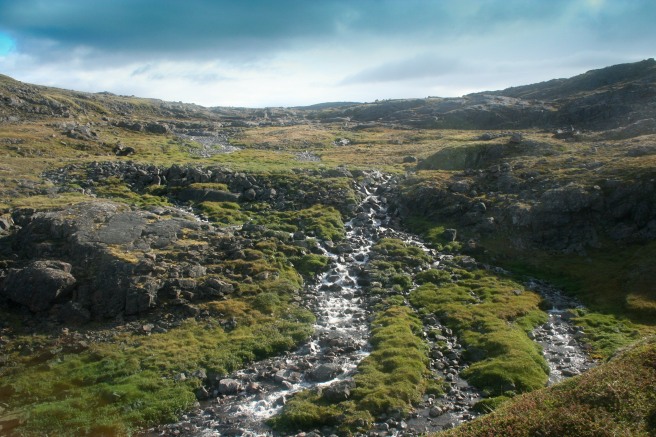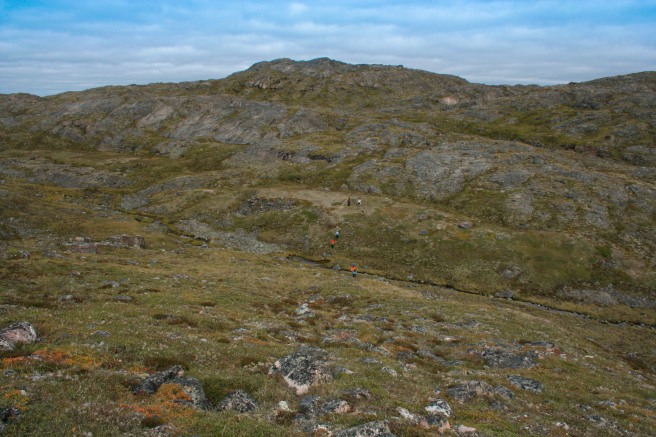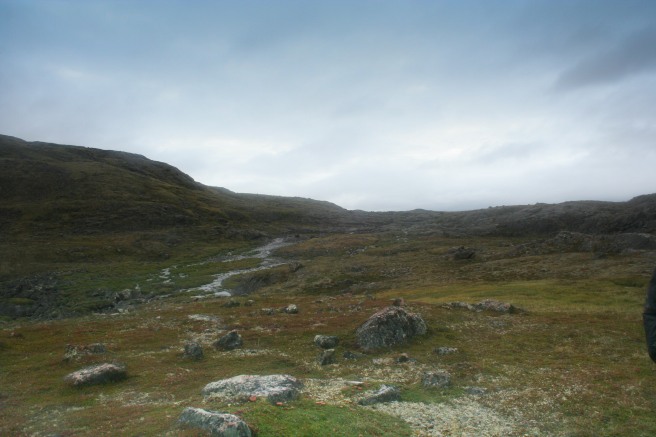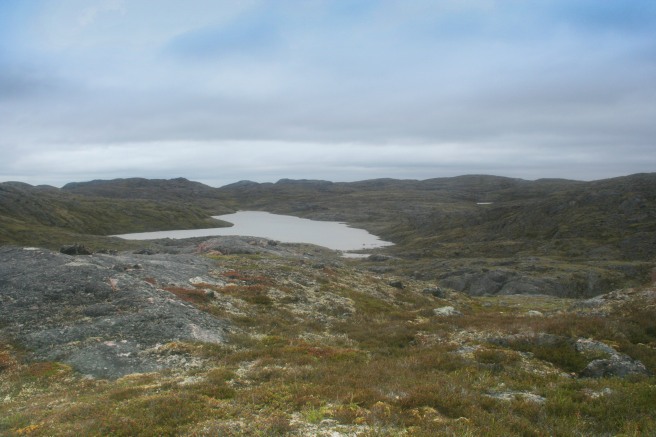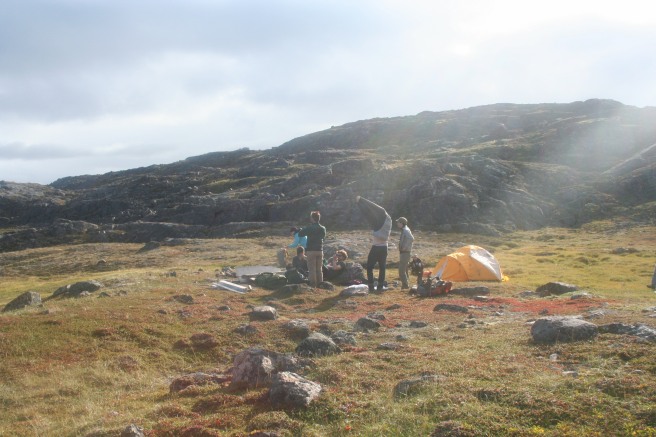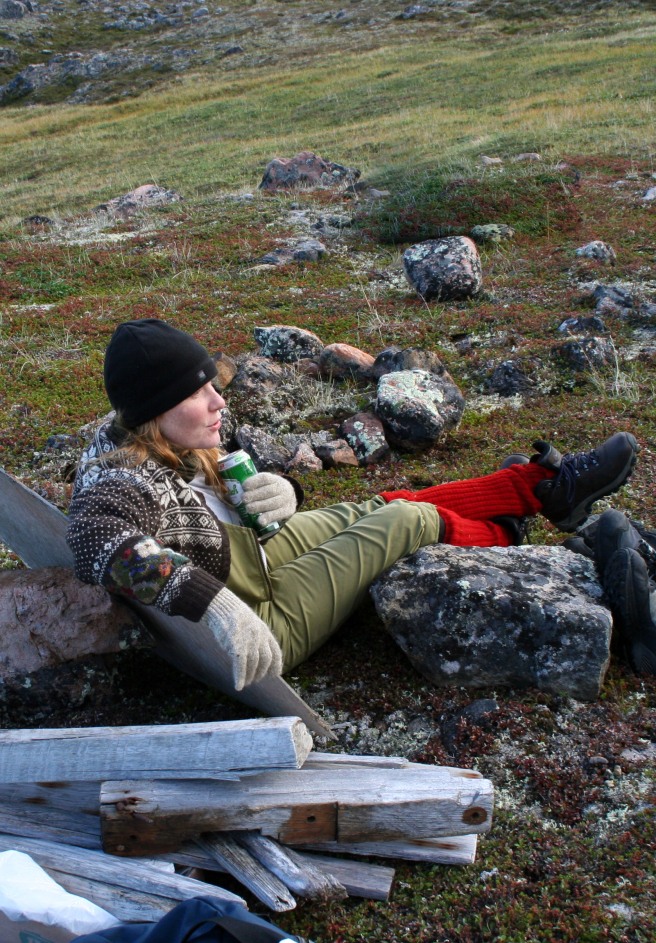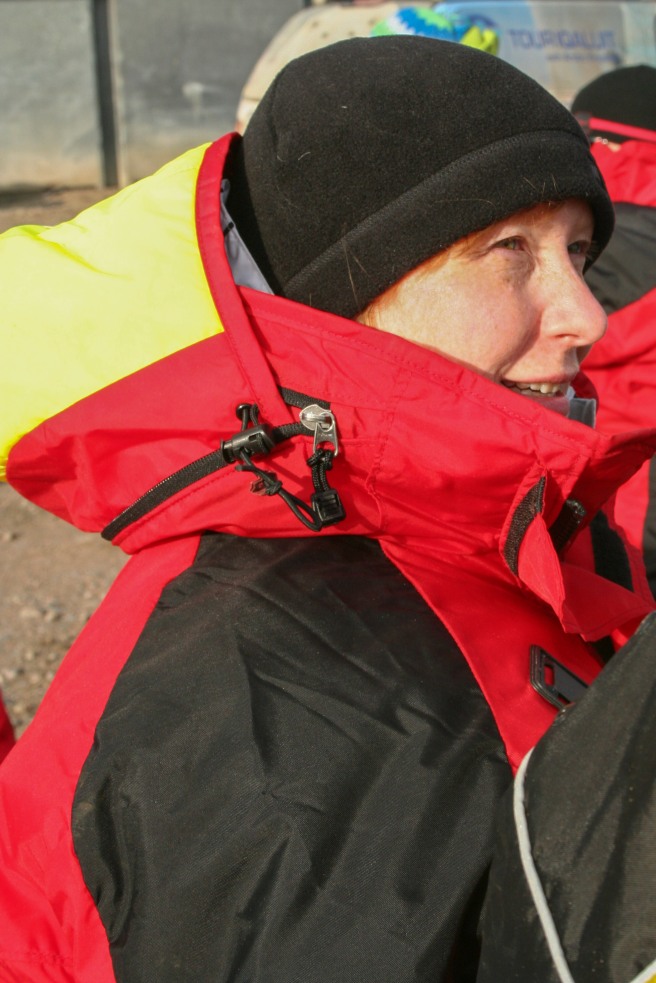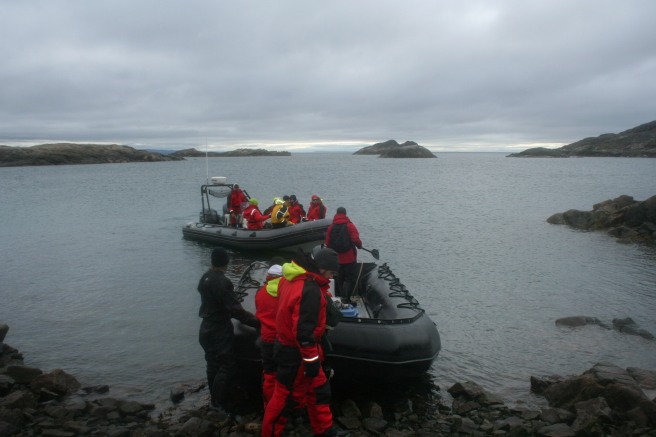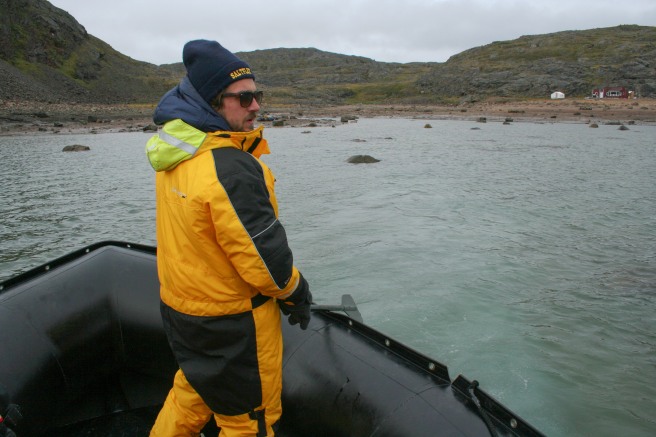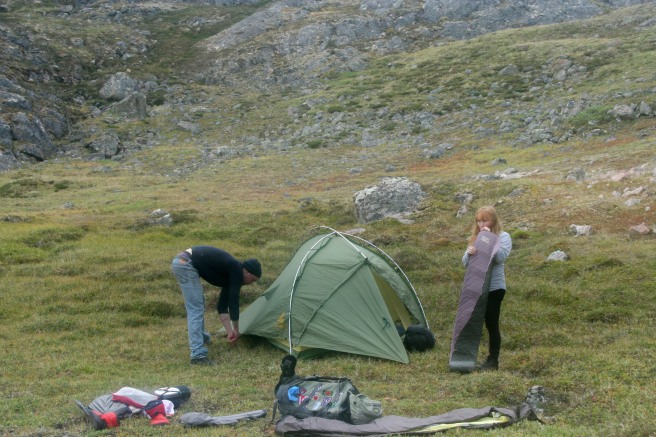Hello friends! I’m glad to see that you’ve been enjoying my posts about Iqaluit. There’s a lot of interest in northern Canada lately, and so I thought it’d be nice for you to see some photos of Iqaluit in summertime, and to hear some stories about the landscape and recreation. I wanted to interrupt the series with what I think is an important and timely topic. That is, being an intruder.
I was talking to a friend who noted that there weren’t a lot of photos of people (read: Inuit people) in any of my posts… Did we just keep to ourselves on our visit? The short answer is that there is a measure of sensitivity that I tried to employ when thinking and writing about my trip to Iqaluit.
I come from a heritage of people who conquer and displace Aboriginal populations. Visiting Nunavut isn’t like visiting Europe, though you can be a nuisance as a tourist there, too. But there’s an additional power dynamic that is rampant in Canada, and if I’m talking about Iqaluit here, it is necessary to talk about that, too.
Kathleen Winter, author of Annabel (you may remember that Sarah Gadon championed Annabel in CBC’s 2014 Canada Reads) recently wrote an article in The Star on the topic of the search for the missing Franklin expedition:
Under floating motes lies the sunken span of spars and timbers that aspired in their heyday to signify Britain’s colonial glory. Today’s Canadian government grasps at credit for resuscitating that glory, yet fails to notice that everything about the new-found Franklin ship has become dead and somehow shameful, as has the old colonial idea of the Northwest Passage itself. The true emotional content of these new images is not triumph, but disgrace. – Kathleen Winter, The true legacy of the Franklin expedition
While the Canadian government trumpets its role in the search for the Franklin expedition, Winter reminds us that we cannot dissociate the Franklin search from the government’s larger interest in the North. Any discussion of the Franklin expedition must also be tied to the discussion of The Melting North (in as much as our ability to comb the ocean floor is directly impacted by the fact that there is less ice obstructing our search), and The Corporatized North (i.e. the pillaging of resources that is now seeing renewed public interest in the wake of Harper’s move to ratify a FIPA with China). The mechanics of mapping and investigating the Northern landscaping is directly tied to corporate interest in the North.
Winter explains that these storylines are all intertwined:
More quietly but with increasing bravado as we allow it to flourish unchallenged, the Canadian government also attests that its submarine probes, icebreakers, and its oil and military partners, are writing new business and militaristic storylines that veer sharply from the poetry of Franklin’s tale. A byproduct of the original search, so the story goes, is that we have now mapped the floor of an Arctic Ocean made navigable by a new melting North. – Kathleen Winter, The true legacy of the Franklin expedition
The article resonates with me. My personal interest in the North, and the difficulty I’ve experienced in knowing how to write about the North in a responsible way, is a challenge. That challenge has everything to do with the fact that I am a visitor there, and that the land that I walked on is owned and operated by a vulnerable population. I don’t mean that the population is weak or without agency, but the Inuit population is vulnerable in the sense that non-Inuit intervention is already rampant in Nunavut (that is, government, private interest in resources, and missionaries). It is delayed colonialism. We are the whale ready to devour the North.
A friend of mine who has lived in Iqaluit for three years now said something that stuck in my mind: Everyone that comes to Iqaluit comes to take something from it.
The “great northern expedition” is an iconic Canadian image: The Adventurer conquers the extreme climate, overcomes the barriers to survival, and inches their way further North. Farley Mowat wrote of these stories extensively, living and experiencing the landscape first-hand. But my friend’s off-handed comment is now tied to the archetypal storyline in my mind: “The Northern Adventurer” is also “The Intruder”.
Many times during my stay, I met people (non-Inuit people) who didn’t know they were intruding. It’s a strange mentality when one doesn’t assess their own interventions, and try to see those interventions in a larger context. “I’ll fix this for you,” or “I’m here to help,” or “I know better.” It is a wolf in sheep’s clothing that doesn’t know he’s a wolf.
I haven’t written a lot about the Inuit people, though 83.6% of people in Nunavut identify as Inuit. My friend’s statement rings in my ears: As an outsider visiting Iqaluit, what is it that I took?
I took photos of the landscape. I didn’t take photos of people because I didn’t want to feel like I was commodifying them in any way by putting them on display in this blog. I didn’t feel like I had the necessary background, permission, or foresight to do so in a responsible way. I’m trying to be sensitive. I hope that’s the right idea. I took entertainment. I took lessons. You can’t take knowledge, so I’ll just say that I received knowledge about some of the animals and cultural norms. I took some Dumpcano back in my lungs, probably. I took a few books about Inuit folklore.
Mainly, I went to watch, to listen, and to let my brain absorb something of a world that I feel is about to change in a dramatic way. And I didn’t want to talk about that process in any casual way on this blog.
The north is changing. You can ask anyone in Iqaluit about the new housing structures that have gone up only in the past few years. Statistics Canada has also shows that Iqaluit’s population and new dwellings is far above the national average. I wonder, given non-Inuit intervention in Nunavut, if the Inuit people will suffer loss of cultural heritage, of language, and traditions. Perhaps, since the culture is so tied to survival of the arctic climate, the culture will remain strong. Still, even that climate is changing, already impacting the Inuit way of life, and the animal populations integral to that way of life.
I’ll leave you with another iconic northern image: The floe edge. Where the Arctic Ocean meets the thick ice of the floe edge, travelers say they can feel the ground shifting beneath their feet. It is unpredictable, and inexperience and lack of preparation can have devastating results. Here we are now, walking out onto the floe edge.



